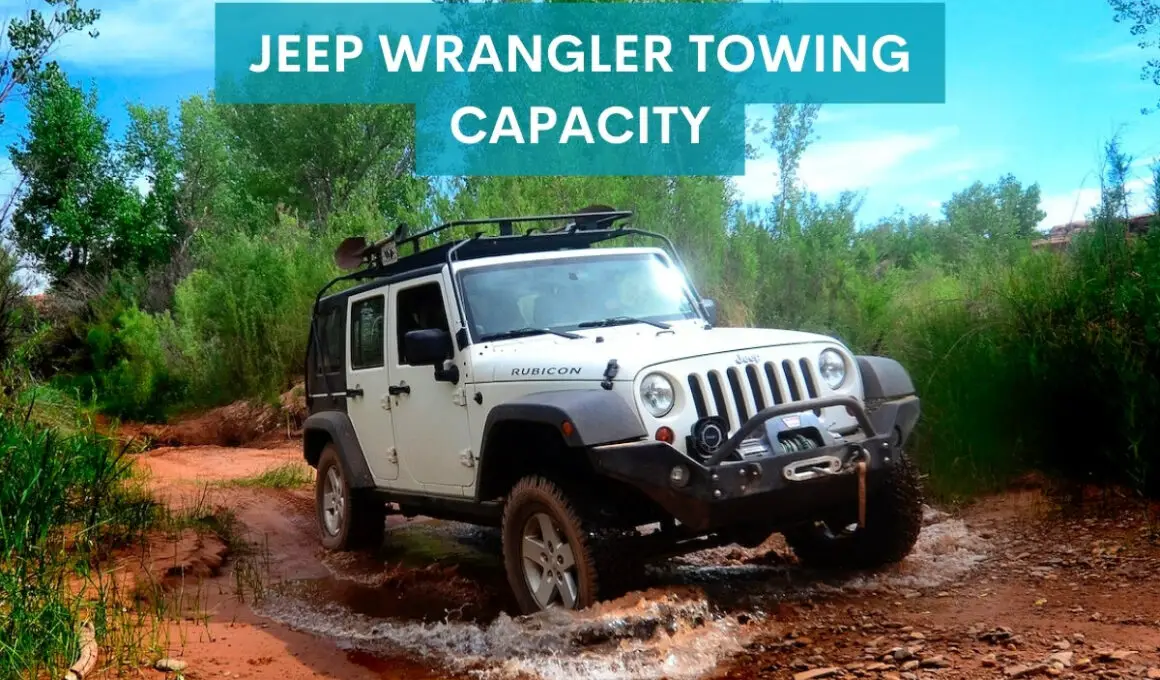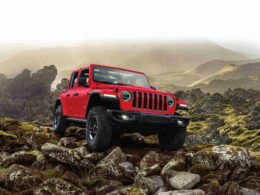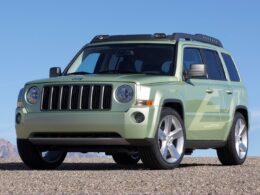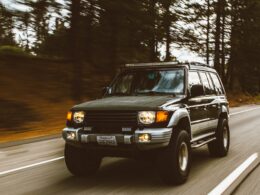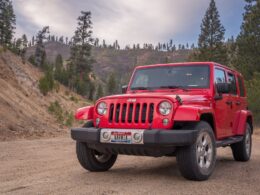In This Article Show
Having spent over 13 years as a mechanic, I’ve worked on various vehicles, but the Jeep Wrangler holds a special place in my heart. Its rugged build and off-road prowess are legendary, making it a favorite among adventure enthusiasts and everyday drivers alike. As a mechanic with a penchant for writing, I’ve always aimed to share insights from my experience in a simple and professional manner.
The Jeep Wrangler isn’t just about aesthetics and off-roading; it also boasts a noteworthy towing capacity. Whether you’re thinking of hauling a small trailer, boat, or even an ATV for the weekend, understanding the Wrangler’s towing capabilities is crucial.
Throughout my career, I’ve often emphasized the importance of knowing a vehicle’s strengths and limits to ensure safety and efficiency.
So, why is towing capacity such a big deal, especially for SUVs like the Jeep Wrangler? And how has the Wrangler’s towing capacity evolved over the years? Let’s dive in.
Jeep Wrangler Towing Capacity (By Model and Engine)
| Model/Trim | Engine | Two-Door Towing Capacity (lbs) | Four-Door (Unlimited) Towing Capacity (lbs) |
|---|---|---|---|
| Jeep Wrangler Sport | 3.6L V6 | 2,000 | 3,500 |
| 2.0L Turbo-four | 2,000 | 3,500 | |
| Jeep Wrangler Sahara | 3.6L V6 | 2,000 | 3,500 |
| 2.0L Turbo-four | 2,000 | 3,500 | |
| Jeep Wrangler Rubicon | 3.6L V6 | 2,000 | 3,500 |
| 2.0L Turbo-four | 2,000 | 3,500 | |
| 3.0L EcoDiesel V6 | – | 3,500 |
What Determines Towing Capacity?
I’ve often been asked, “What determines a vehicle’s towing capacity?” It’s a pertinent question; the answer isn’t just about the engine size or horsepower. Towing capacity is a complex balance of various vehicle attributes. To help you better understand this, let’s break it down into its core components.
1. Gross Vehicle Weight Rating (GVWR)
This is the maximum weight a vehicle can safely handle, including its own weight plus passengers, cargo, and the weight of any towed vehicle (tongue weight included). It’s essential never to exceed this limit for the safety of both the driver and the vehicle.
2. Gross Trailer Weight (GTW)
This refers to the full weight of the trailer, including all contents. When selecting a trailer, always consider its weight when loaded, not just its empty weight.
3. Tongue Weight
This is the weight exerted directly onto the hitch by the trailer. The ideal tongue weight should typically be about 10-15% of the GTW. Too much or too little tongue weight can cause issues like trailer sway or reduced vehicle control.
4. Engine and Transmission
A vehicle’s powertrain is pivotal in its towing capabilities. A robust engine can pull heavier loads, but the transmission must also be capable of managing this without overheating. Different engine types and transmissions have varying tow ratings, even within the same vehicle model.
5. Frame Strength and Suspension
The vehicle’s frame and suspension system also influence towing capacity. A strong frame can support more weight, while the suspension ensures that both the vehicle and the trailer maintain stability on the road.
6. Braking System
When towing, your vehicle isn’t just pulling extra weight; it also needs to stop that weight effectively. Hence, the vehicle’s brakes must be up to the task of handling the additional load, ensuring safe stops.
7. Tire Rating
Tires play a crucial role too. They must be able to support the weight of both the vehicle and the trailer. Always check tire load ratings before towing.
In the grand scheme of things, the towing capacity isn’t just a random number set by manufacturers; it’s a calculated limit determined by the vehicle’s overall design and capabilities.
Throughout my career, I’ve seen the consequences of overloading vehicles firsthand, and trust me, it’s not something you’d want to experience. So, always respect these limits, and consult your vehicle’s manual or a professional like myself when in doubt.
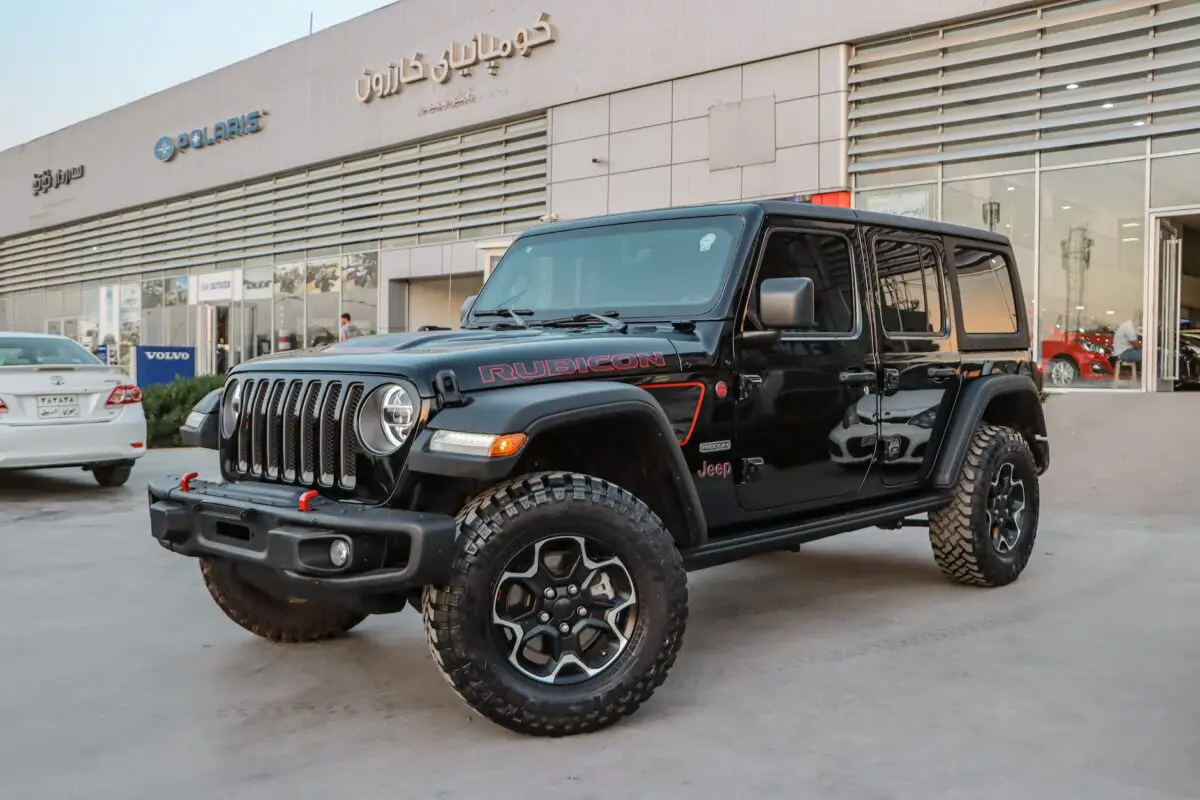
Jeep Wrangler’s Evolution in Towing Capacity
The Wrangler has consistently symbolized adventure, freedom, and rugged capabilities. But like any enduring icon, it hasn’t stagnated; it has evolved. This evolution is particularly evident in its towing capacities over the years.
1. The Early Years
The original Jeep Wranglers were primarily designed for off-roading and not necessarily for towing. The first-generation YJ Wrangler (1987-1995) was iconic with its square headlights and leaf spring suspension. Its towing capacity was relatively modest, fitting its primary purpose as an off-road warrior rather than a hauling powerhouse.
2. The TJ Wrangler Era (1997-2006)
With the TJ came coil spring suspension, improving ride comfort. Its towing capacity saw improvements, making it more versatile than its predecessor. The addition of the Rubicon trim in 2003 further underscored the Wrangler’s capabilities, both on and off the road.
3. JK Wrangler Era (2007-2018)
The JK was a game-changer. It opened the Wrangler to a broader audience in two- and four-door models. Its towing capacity grew significantly with a more potent V6 engine and enhanced structural rigidity. The four-door Unlimited models, in particular, became popular for their improved towing prowess.
4. The Current JL Wrangler (2018-Present at the time of writing)
The JL Wrangler is a blend of tradition and innovation. While retaining its iconic look, it now boasts advanced technologies, lighter materials, and more engine options, including a turbo-four and diesel. These enhancements have given the JL a respectable towing capacity, making it fit for a broader range of adventures and duties.
It’s worth noting that, while the Wrangler’s towing capacity has increased over the years, it’s essential to understand the specific capabilities of each model and trim. Over the years, I’ve encountered several Jeep enthusiasts in my workshop eager to optimize their Wranglers for towing.
The enthusiasm is contagious, but my advice remains consistent: know your vehicle’s limits and always prioritize safety.
Looking at the Wrangler’s journey, it’s evident that it has matured without losing its soul. From a pure off-roader to a versatile SUV that can tow and haul, the Jeep Wrangler truly embodies the spirit of evolution while staying true to its roots.
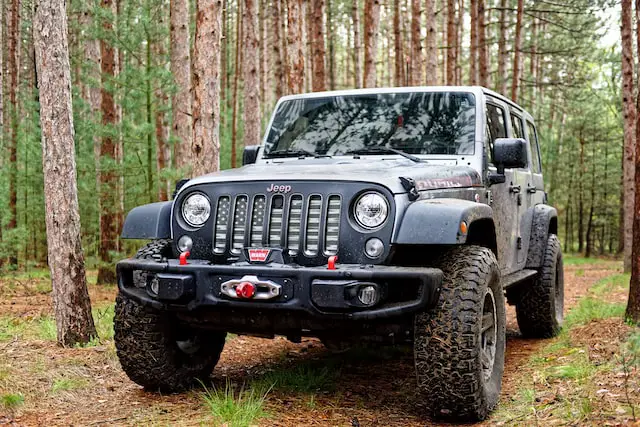
Current Jeep Wrangler Towing Capacity (By Model and Engine)
Throughout the years, I’ve seen the Jeep Wrangler evolve into a versatile powerhouse, maintaining its legendary off-road status while adapting to modern demands. This is especially evident in the current JL Wrangler’s diverse range of models and engines, each boasting its unique towing capacity. Let’s break down the specifics:
1. Jeep Wrangler Sport
3.6L V6
This engine, often dubbed the ‘workhorse’ of the Wrangler line, offers a towing capacity of approximately 2,000 lbs for the two-door variant and 3,500 lbs for the four-door Unlimited model.
2.0L Turbo-four
Surprisingly efficient for its size, this engine can tow up to 3,500 lbs when paired with the four-door Unlimited version. The two-door, however, maintains a 2,000 lbs capacity, similar to the V6.
2. Jeep Wrangler Sahara
3.6L V6
Consistent with the Sport model, the Sahara two-door offers a towing capacity of 2,000 lbs, while the four-door Unlimited can handle up to 3,500 lbs.
2.0L Turbo-four
For those favoring fuel efficiency without compromising much on towing, the turbo-four in the Sahara Unlimited can also tow up to 3,500 lbs. The two-door remains at a 2,000 lbs limit.
3. Jeep Wrangler Rubicon
Known for its off-road dominance, the Rubicon doesn’t compromise on towing either.
3.6L V6
With a towing capacity of 2,000 lbs for the two-door and 3,500 lbs for the Unlimited, it’s in line with the Sport and Sahara.
2.0L Turbo-four
Same as the Sahara, the Rubicon’s two-door model tows up to 2,000 lbs, while the Unlimited manages a solid 3,500 lbs.
3.0L EcoDiesel V6 (Available for the four-door Unlimited)
This is where things get interesting. The EcoDiesel variant, with its heightened torque, boasts a towing capacity of up to 3,500 lbs, but it’s the enhanced fuel economy and torque-rich performance that make it a favorite among many Jeep enthusiasts.
Remember, towing capacities are approximations and can vary based on specific configurations, optional equipment, and other factors. It’s always wise to consult the owner’s manual or a professional to understand the exact capacities for your specific Jeep Wrangler model and configuration.
Whether hauling camping gear, a boat, or a small trailer, the modern Jeep Wrangler offers a configuration to suit your needs while retaining its iconic off-road essence.
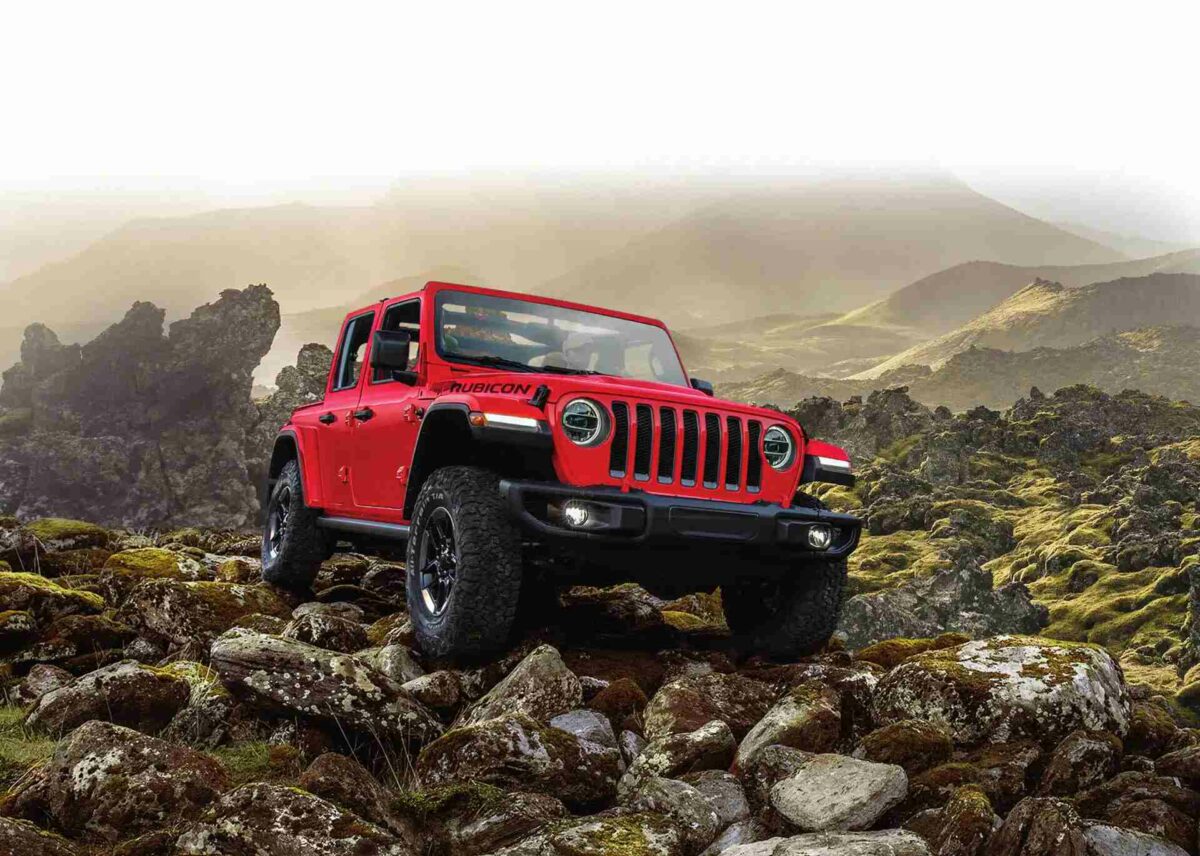
Benefits of Jeep Wrangler’s Towing Capacity
I’ve often appreciated the various advantages of the Jeep Wrangler’s towing capacity. The Wrangler is not just another SUV on the block; its towing capabilities bring several unique benefits to the table. Let’s explore them:
1. Versatility for Adventures
With a Jeep Wrangler, you aren’t limited to on-road adventures. Its significant towing capacity means you can bring a boat, ATV, or camping trailer even when venturing off the beaten path. It bridges the gap between the everyday commute and spontaneous wilderness adventures.
2. Optimal Load Distribution
The Jeep Wrangler’s design and suspension system facilitate even weight distribution when towing. This ensures stability, minimizes swaying, and provides a safer towing experience.
3. Enhanced Engine Options
The various engine options, from the 3.6L V6 to the 3.0L EcoDiesel V6, mean there’s a Wrangler for different towing needs. Whether you prioritize fuel efficiency or torque, there’s a Wrangler model tailored for your towing demands.
4. Economic Benefits
Instead of investing in a separate vehicle for towing, Wrangler owners can enjoy the perks of both a daily driver and a competent tow vehicle in one package. This dual capability can lead to savings in the long run.
5. Compact Size with Mighty Power
Unlike many trucks with high towing capacities, the Jeep Wrangler retains a relatively compact size. This balance ensures easier maneuverability, especially in city settings or tight camping spots, while still boasting impressive towing capabilities.
6. Retains Resale Value
The Jeep Wrangler’s renowned versatility, including its towing capacity, ensures that it retains its value over the years. When it’s time to sell or trade-in, a well-maintained Wrangler with towing capabilities often fetches a favorable price.
7. Complementary Towing Features
Modern Jeep Wranglers come equipped with several features that assist in towing. These include trailer sway control, hill start assist, and advanced braking systems, ensuring capability, safety, and convenience.
In The End 🚓
While the Wrangler stands tall as an off-roading legend, its towing capabilities make it a versatile choice for a broader range of activities. From my vantage point, with over a decade of experience in the field, I can attest that the Jeep Wrangler offers one of the most well-rounded packages for those who seek both adventure and utility.
How to Increase Your Jeep Wrangler’s Towing Capacity
I’ve seen countless Jeep enthusiasts looking to bolster the towing prowess of their beloved Wranglers. If you’re among those who feel the urge to squeeze more out of your Jeep, here are some legitimate, safe ways to enhance its towing capacity:
1. Upgrade the Hitch
A stock hitch might not be designed for maximum towing. Consider upgrading to a Class III or IV hitch that can handle heavier loads. While this might allow the hitch to handle more weight, it doesn’t automatically increase the vehicle’s overall towing capacity. It’s just one step in the process.
2. Enhance the Braking System
When you’re towing heavier loads, you’ll also need more stopping power. Consider upgrading to larger, high-performance brake rotors and pads. This will ensure you can safely and efficiently bring your loaded Jeep to a stop.
3. Reinforce the Suspension
Beefing up your Wrangler’s suspension will provide better weight distribution and stability. Consider adding air springs or helper springs to manage the additional weight effectively.
4. Upgrade the Tires
Invest in higher-load-rated tires. This improves safety and ensures better handling and longevity of the tires when regularly towing heavy loads. Always check the load rating on the tire sidewall.
5. Cooling System Upgrade
Towing can put extra strain on your engine, leading to overheating. Upgrade your radiator and invest in a larger or additional transmission cooler to keep things running smoothly and to prolong the life of your engine and transmission.
6. Re-gearing the Differential
Consider re-gearing if you’re consistently towing near your Wrangler’s limit. A higher gear ratio can provide more torque and power at lower speeds, which is beneficial for towing.
7. Engine and Transmission Upgrades
While this is more extensive and pricier, upgrading to a more powerful engine or a transmission designed for heavier loads can significantly boost towing capabilities.
8. Regular Maintenance
It might sound basic, but ensuring your vehicle is in top shape can optimize its towing capacity. Regular oil changes, fluid checks, and other routine maintenance tasks ensure that the engine and transmission can handle the added strain of towing.
9. Use Weight Distribution Systems
These systems help evenly distribute the weight of the trailer across the vehicle’s axles. This results in improved stability, reduced trailer sway, and enhanced control.
10. Consult Professionals
Before making significant changes, consulting with professionals, especially those with years of experience like me is wise. They can provide guidance tailored to your specific model and needs.
A word of caution ⚠️
Even after making all these upgrades, every vehicle has a structural limit. Always ensure you’re operating within safe parameters, prioritizing safety over all else.






